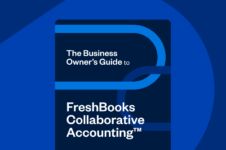Instead of obsessing about how much time you spend planning projects, perhaps it’s time you focused on the quality of planning?

As a small business owner, you’re likely your own project planner and manager, while also juggling many other roles.
You probably understand how planning contributes toward project and business success. If not, consider that project planning:
- Assists you in completing projects on time and on budget
- Ensures that everyone involved in the project—clients and employees—understand the objectives of the project
- Lets everyone know what their roles are in the project
- Helps you better manage your time, costs, budgets, and resources
- Aids in identifying risks early on so that you can plan for these risks
- Protects you from making costly mistakes which saves you money
- Lets you get all the details down on paper
- Reduces overwhelm; instead of seeing a mammoth project you see a series of manageable tasks
However, there’s a tipping point: too much planning can be detrimental, cause unnecessary delays and cost you money.
You can end up boiling the ocean thinking, planning and procrastinating over every detail instead of taking action. At some point you have to get out there, do the work and figure it out as you go along; otherwise doubt and fear can fester. No one says it better than Dale Carnegie:
“Inaction breeds doubt and fear. Action breeds confidence and courage. If you want to conquer fear, do not sit home and think about it. Go out and get busy.”
But this begs the question: If there’s a tipping point, how much time should you spend planning?
In this post, we answer this question, explain why you shouldn’t worry about how much time you spend planning, and what to do instead.
How Much Time Should You Spend Planning?
There’s no one-size-fits-all answer to the time you should spend planning. But, there are some key factors to consider as you enter the planning phase of a project.
In my experience, some projects require a simple kick-off and brief. Others are bigger in scale and need rigorous due diligence, data analysis, market research and more.
Project planners, consultants, and managers support this experience citing that the planning stage can run anywhere from 10% to 50% of your entire project.
The reason why there’s no definitive time frame is that projects differ vastly in terms of scope and are influenced by a variety of factors: complexity, the nature of the project, available resources, and the number of employees and their skill sets.
While analyzing these factors won’t help you pinpoint how much time to spend on projects, they will help determine which projects need more planning than others. These factors, in effect, become your compass for guiding your project planning decisions.
Let’s have a look.
How Complex Is the Project?
Complex projects require more planning. For example, designing a website from scratch is more intensive than a simple copy or creative update on an existing website.
For a larger website design or relaunch, you’ll have to gather lots of information, conduct competitor analyses, do an SEO audit and consider costs. There will also undoubtedly be many client meetings and many rounds of revisions.
The Nature of the Project: Is It New?
You’re so accustomed to some projects that you can plan them in your head while you’re sleeping. But newer projects may need more planning.
Let’s say you decide to diversify and offer a new service that’s different from anything you’ve provided in the past. You find a client who’s interested but have limited prior project knowledge to draw from and previous plans that you can tailor to this new project.
For example, you may be a photographer who takes photos, edits them, and also re-colors them, but now decides to offer printing, matting, and framing. You’ll have to ensure you have the resources and skills to offer these services and also decide on how to price them.
Alternatively, a client may approach you to tackle a project that requires you to apply your skills differently. Because it’s a dream client and someone you’ve always wanted to work with, you decide to tackle the project anyway.
For example, you’re a writer who specializes in writing blog posts for clients. A client now asks you to help them write their About, Home and Services pages for their website.
They also want you to insert a few keywords in the copy. You now need to do extra research on how to structure these pages, arrange a client meeting to discuss requirements, and also plan an SEO strategy.
How Uncertain Are the Outcomes?
Some projects have higher levels of uncertainty than others, and their outcomes aren’t guaranteed. In these cases it may be wise to plan less and take a more agile approach: have a basic plan that you can change and adapt as you move through the project.
Indeed, this is approach recommended by Chuck Cobb, author of “The Project Manager’s Guide to Mastering Agile.” In a Quora conversation, he shares the example of finding a cure for cancer (high levels of uncertainty) vs. building a bridge (low levels of uncertainty).
He does acknowledge that these are extreme examples and most projects fall along a spectrum of uncertainty. The important thing—as a small business owner—is that you recognize how much uncertainty the project has and act accordingly. If, for example, you’re creating a new product, taking an agile approach will be wise.
Do I Have Enough Resources?
When any new project comes along, you can usually quickly determine whether you have the resources—time and money—by creating a project estimate.
Let’s say you’re starting a massive project that requires more working capital than you have. In these instances, you can create a plan for getting that working capital.
Do I Have Enough Employees and What’s Their Skill Set?
There will be projects that are complex and so massive that neither you or your team have the time and skills to complete the tasks.
In these situations, you need to put together a plan and outsource. Here are a few examples of when outsourcing is needed:
- A writer is tasked to create an infographic but doesn’t have the skills
- Someone approaches a PR agency for large-scale event planning , but they cannot do it in-house
- An existing client contacts their lawyer to help them, but they don’t have the expertise in that area of law
- A website designer needs to create a website, but the client also wants photography and illustration
It’s important to note that there may be some projects you should say “no” to. But breaking down above factors will help you determine which projects require a larger devotion of time.
Still, the best approach may be not to worry about how much time you spend planning in the first place.
Why You Shouldn’t Worry About How Much Time You Spend Planning
Proper planning is there to provide a roadmap that you can follow. A roadmap that allows you to move intelligently through a project so that you don’t get stuck.
But often we start spinning our wheels, thinking to ourselves: Have I spent enough time planning? Have I covered all the details? Overwhelm can fast become the order of the day.
The truth is that planning will never answer every question perfectly. There will always be things that you need to figure out on the go. And, invariably, plans are subject to change particularly as projects often change themselves from one day to the next.
That’s why instead of worrying about the details and whether you’ve spent enough time planning, focus on proper project planning.
Proper Project Planning: What to Do Instead
You should focus on those aspects that will help you move along intelligently through the project.
Focus on streamlining the planning process so that you spend less time planning and more time doing. Here are a few guidelines and tips to do exactly that:
1. Prioritize
Include the most important aspects in your plan; those that will generate the best results. To help you apply the Pareto Principle—or the 80/20—rule which says that 80% of the results come from 20% of the causes.
2. Keep It Concise
Don’t make your plan too long and pile on too many items.
3. Limit Involvement
Don’t involve too many people in the plan as this will complicate matters.
4. Focus on the Elements of Proper Planning
Include these eight elements of effective project planning:
- Stakeholder’s needs
- Smart project objectives
- Deliverables and deadlines
- A detailed project schedule
- Defined roles and responsibilities
- The costs
- A communication plan
- The systems and processes you’ll use
5. Don’t Get Bogged down by Details
If there are details you cannot pin down, don’t let it hold you back. Instead make a note of it and come back to it as the project progresses.
6. Adopt a “Good Enough” Approach
Plan for a shippable asset or solution, not a perfect product. For example, when you decorate a room, it’s rarely the dramatic before and after of TV shows. Rather, you might do it in phases: Floors and walls; then furniture and accessories.
There’s always something to tweak and improve upon. Because most projects are like that too, don’t plan to be “finished forever.” Instead, plan to make something that will drive the result and can also evolve as you learn and gather new information.
Conclusion
Determining how much time to spend on planning a project can be difficult.
But, if you use these factors as a guideline you can determine which projects you should spend more time on.
More importantly, instead of worrying about how much time to spend on planning, focus on streamlining the planning process.
Prioritize, keep it concise, limit involvement, focus on critical elements, don’t get too bogged down by the details, and plan for a shippable solution.
Do that, and you’ll avoid spinning your wheels and never getting your project off the ground. Because let’s face it, planning is good, but too much planning only causes paralysis analysis, no action, and very little results.
How do you decide how much time to spend on project planning?

Written by Nick Darlington, Freelance Contributor
Posted on December 7, 2017

 Master the Key Elements of Effective Project Planning Today
Master the Key Elements of Effective Project Planning Today Take the Guesswork Out of Projects with Estimates
Take the Guesswork Out of Projects with Estimates How Zachary Uses Projects and Profitability Tools to Save $2000/Month
How Zachary Uses Projects and Profitability Tools to Save $2000/Month





